With constant technological advancements, the world is evolving at a faster rate than ever before. It is changing how we live and our way of working. One such domain that has seen a rapid change in recent times is product management. Businesses and organizations ensure their project management software is current and effective as they compete in the digital age. This is where product management software can help.
Choosing the right Product Management website for your business can be hectic despite the available tools. To tackle the burden, this article will help outline the essential features of an effective Product Management website by briefly listing the top 10 Product Management Websites. By the end of this article, you will better understand the key features of a product management website and be better equipped to choose the best one for your business needs. Continue reading to find out more.
Also read: How Can Product Managers and Engineers Collaborate More Effectively >
Table of Contents: hide
How to Choose the Best Product Management Website to Fit Your Needs
How to Choose the Best Product Management Website to Fit Your Needs
Wondering what are entities to consider while weighing good Product Management Websites? This section is for you! There are numerous Product management Websites available on the internet, but not all of them will meet everyone’s needs. Choosing the right tool necessitates a clear understanding of your business requirements; once identified, you can focus on selecting a tool that meets those needs. During this process, keep the following qualities in mind to help you make an informed decision and choose the best product management tool for your business:
- Friendly User-interface: A user-friendly interface is an ideal trait considered necessary for a good Product Management Website. It means the tool should be designed with a simple and intuitive interface that is easy to navigate, and users should be able to find the needed features in almost no time. Besides this, it should not be overwhelming for users who may not have extensive technical knowledge. This results in the reduction of the error rate, making the tool more effective for the team.
- Range of Features: A good Product Management tool should not just be a basic task manager or a simple to-do list app, but instead, it should have an extensive range of features to support various aspects of the product management process. These features include defining and tracking product requirements, creating and managing product roadmaps, prioritizing tasks and features, and organizing sprints chronologically. Additionally, Product Managers should be able to track progress against goals and milestones, monitor product performance and user feedback, and manage customer feedback and support.
- Integrates with other tools: Integration is a crucial trait of a good Product management tool, as it allows for seamless collaboration and communication between different teams and software without switching tabs. They can integrate many infamous tools for sharing thoughts among peers, like Slack, Asana, etc. This makes the life of product managers easier as they can navigate their tasks in just a few clicks.
- Incorporating User Feedback: Another important quality of an ideal Product Management tool is its ability to take user’s feedback in the notice and perform necessary action to resolve the conflict. This involves collecting feedback from various sources, including email, chatbots, smart built-in browser fixes, and integration with CRM systems. An optimum Product Management tool should be able to combine this feedback into clear and concise outputs that can be easily interpreted and used by colleagues to extract meaningful information. This helps identify the key areas of improvement and allows for better decision-making regarding the product’s development.
- Should be Wallet Friendly: “Affordability” or“Cost-effectiveness” can be considered a quality for selecting a Product management tool. Choosing a tool that provides value for money and fits within the organization’s budget constraints is important. A too-expensive tool may not be feasible for smaller businesses, while a too-cheap tool may lack the essential features required for effective product management. Hence, finding a tool that strikes the right balance between affordability and functionality is crucial.

How to Choose the Best Product Management Website to Fit Your Needs
Product Management Websites Reviews – The Top 10 List
Want to know what Product Management websites are used mostly? This part is for you! Selecting the right tool for the job is crucial in any profession, and product management is no exception. With many options available today for Product Management websites, deciding which sites to use can be overwhelming. However, choosing the right product management site can make a significant difference in the efficiency and success of a product team. This section will provide an overview of the top 10 product management sites and reading material to help you thoroughly understand and compare these tools.
Jira
Jira is a widely used project management tool for issue tracking, agile project management, and bug tracking founded by Atlassian in 2002. It has since become one of the most popular project management tools. Jira is a good choice because it is highly customizable and can be adapted to fit various project management needs. It also offers a range of features, including real-time collaboration, customizable workflows, and reporting and analytics, making it a versatile tool for product management. Additionally, Jira has a large user community and is well-supported by Atlassian, ensuring it is continually updated and improved.
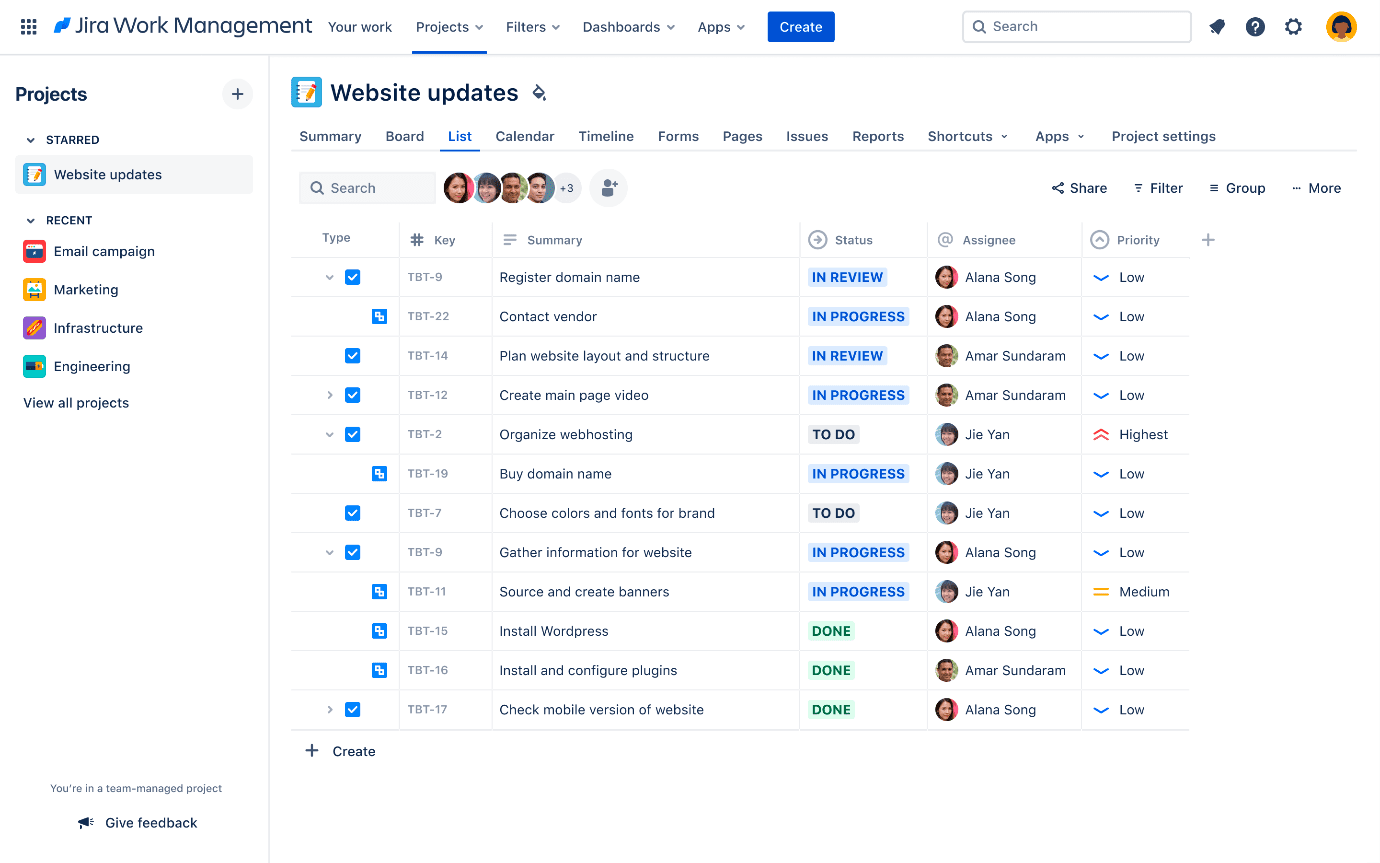
Jira Interface
Good article from the site: A Product Manager’s Guide to Release Planning
Pendo.io
Founded in 2013 by Todd Olson, Erik Troan, Rahul Jain, and Brian Long, Pendo is a product management platform that helps businesses understand and guide their users. It is a handy tool for companies working on the Management of Products because it provides a comprehensive solution for understanding user behavior, gathering customer feedback, and optimizing product experiences. It also offers a range of integrations with other popular product management and communication tools, making it a versatile option for teams with different needs. Additionally, Pendo is known for its ease of use and user-friendly interface, which makes it accessible for teams of all technical skill levels.
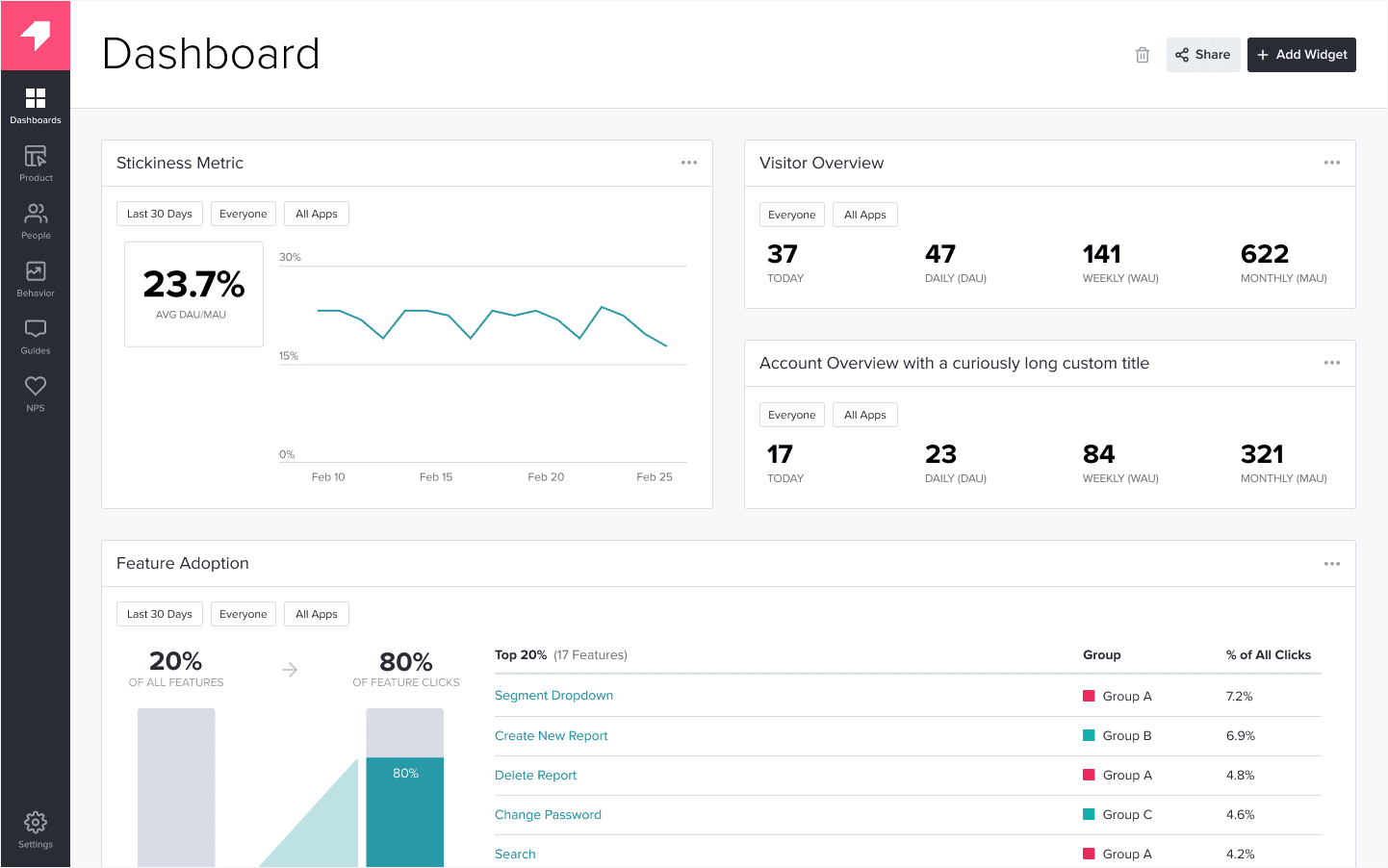
Pendo Io Interface
Good article from the site: What is Product Management Anyway? – Pendo Blog
Userpilot
Userpilot is a product management software that helps businesses optimize user onboarding and retention. It allows product teams to create interactive guides, walkthroughs, and onboarding experiences without requiring technical skill and was founded in 2016 by Emre Yilmaz, Arda Kutsal, and Ali Demir. Some of the use cases of Userpilot include improving user engagement and activation, reducing churn rates, and increasing feature adoption. The software allows product teams to analyze user behavior and personalize onboarding experiences based on their preferences, making it a powerful tool for improving overall product success.
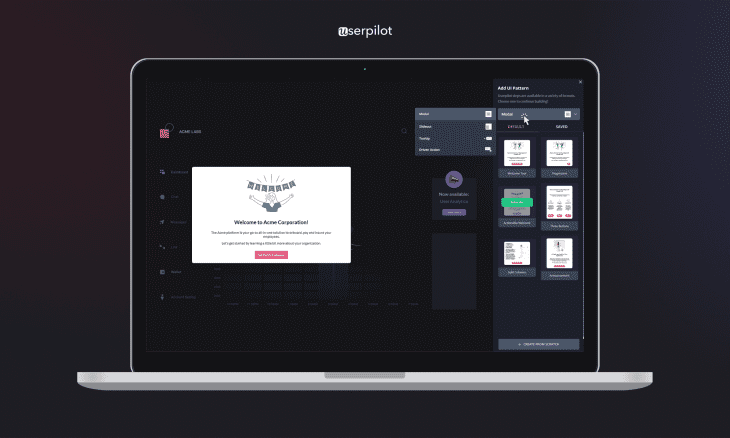
Userpilot Interface
Good article from the site: The Userpilot Blog | Your Daily Source of Product Growth
Craft.io
Craft.io, a tool for product management launched in 2015, is well-known among product managers. One of Craft.io’s most notable features is the collaborative interface design, which enables simultaneous collaboration between multiple stakeholders on the same project. It provides a central location for product teams to compile all their information, create individualized roadmaps that are always up to date, link strategy to features, and effectively tell a compelling product story.
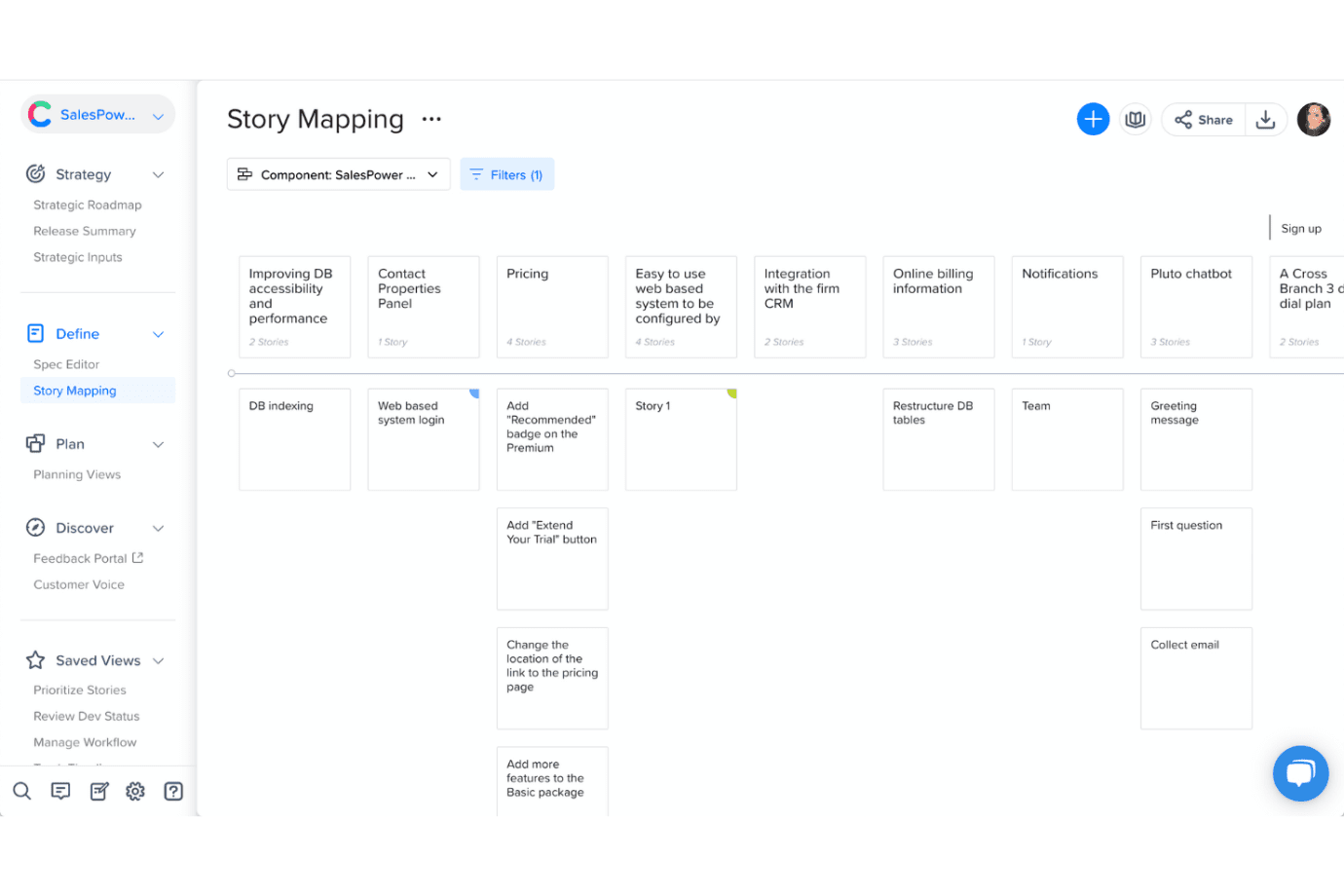
Craft Io Interface
Good article from the site: Blog – Best product management software
Wrike
In 2006, Andrew Filev founded a popular Product Management software named Wrike. It is a cloud-based tech stack that enables users to retrieve their projects and drafts from anywhere with an internet connection. This tool’s robust task management and collaboration features make it handy and unique, such as run-time editing through its user-friendly interface, project templates, and custom workflows template. It also offers time tracking, budget management, and reporting tools to help teams stay on track and deliver projects on time and within budget.

Wrike Interface
Good article from the site: A Complete Guide to Product Management
ClickUp
ClickUp is a cloud-based Product management tool founded by Zeb Evans in 2016 that utilizes modern web technologies such as React and GraphQL to provide a seamless and efficient user experience. One unique feature of ClickUp is its customizable and modular design that allows users to tailor the platform to their needs. Its key features include task management, time tracking, project templates, and collaboration tools. Many people have switched to ClickUp due to its attractive user interface and ideal color coordination compared to its competitors.
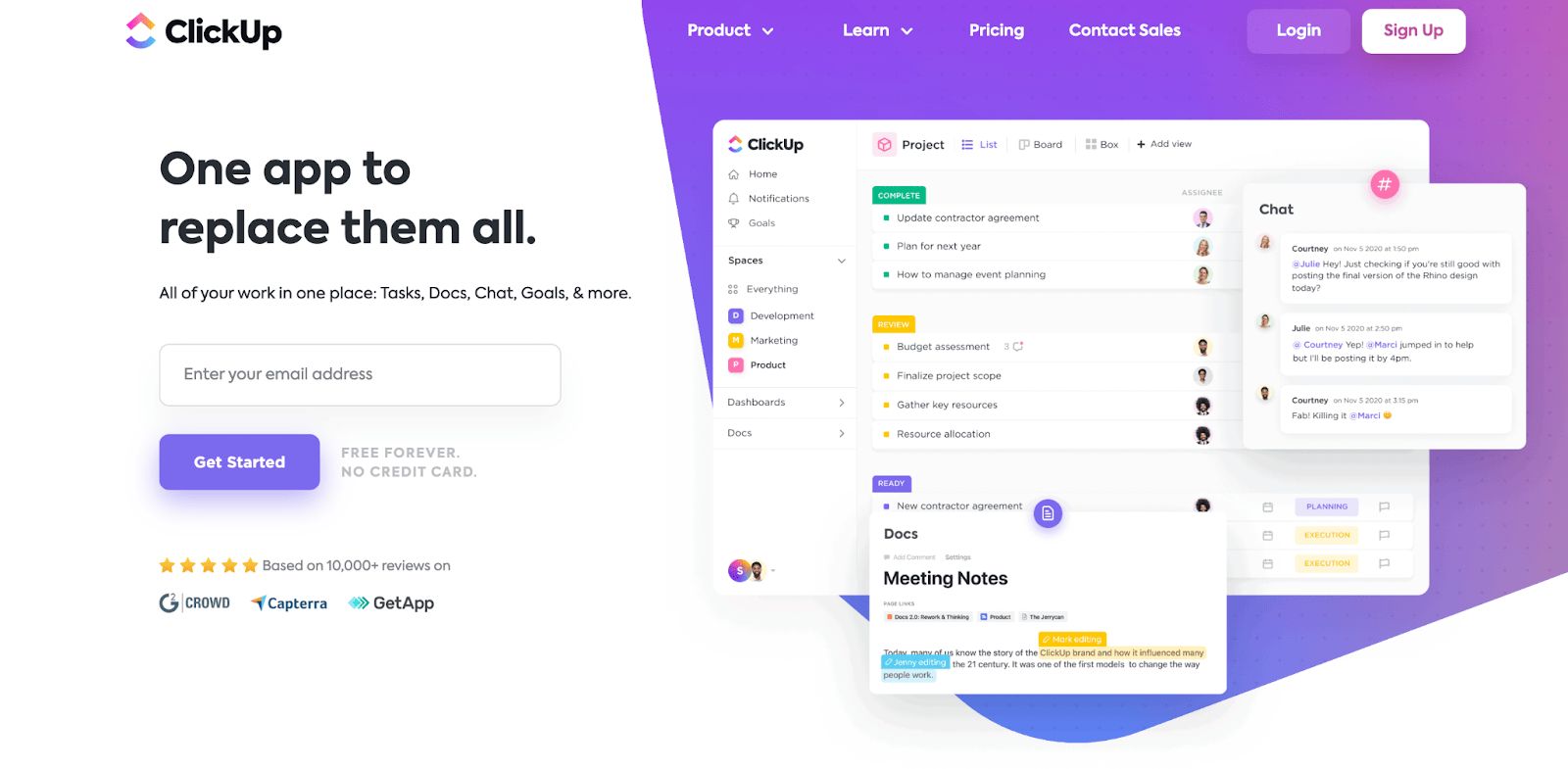
CluckUp Interface
Good article from the site: Learn About Product Management – Examples, Templates
Miro
Miro is a cloud-based collaborative whiteboarding platform founded by Andrey Khusid and Oleg Shardin in 2011. Since then, it has been a popular tool for remote collaboration, brainstorming, diagramming, and project management. It provides a virtual canvas where teams can collaborate in real-time, irrespective of location, creating and organizing ideas, designs, and workflows. It offers templates and integrations with tools like Slack, Jira, etc. It would not be wrong to call Miro an ideal choice for product managers to use as their workspace throughout a product’s lifecycle.
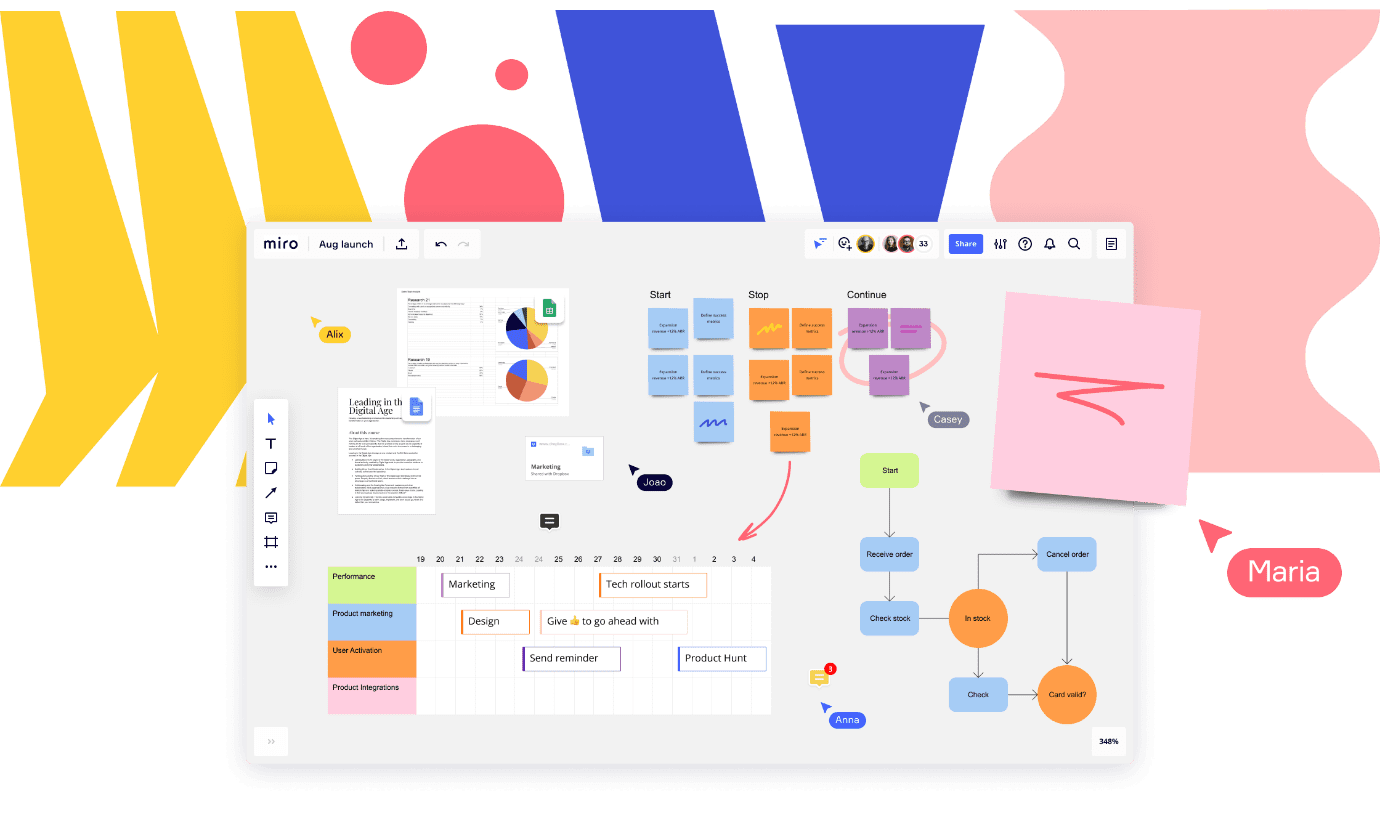
Miro Interface
Good article from the site: A product manager’s guide to hybrid work
Airtable
Airtable was established in 2012 as a cloud-based company by Howie Liu, Andrew Ofstad, and Emmett Nicholas as a platform that aims to offer users a hybrid solution that merges the functionalities of a spreadsheet and a database while operating remotely. It fits the needs of most product managers by providing a unified platform for communication, document sharing, and much more through its intuitive interface. Besides this, it also offers integration of remote calendars like Calendly, google calendars, etc., making sure the deadlines are taken into consideration by everyone in the workspace.
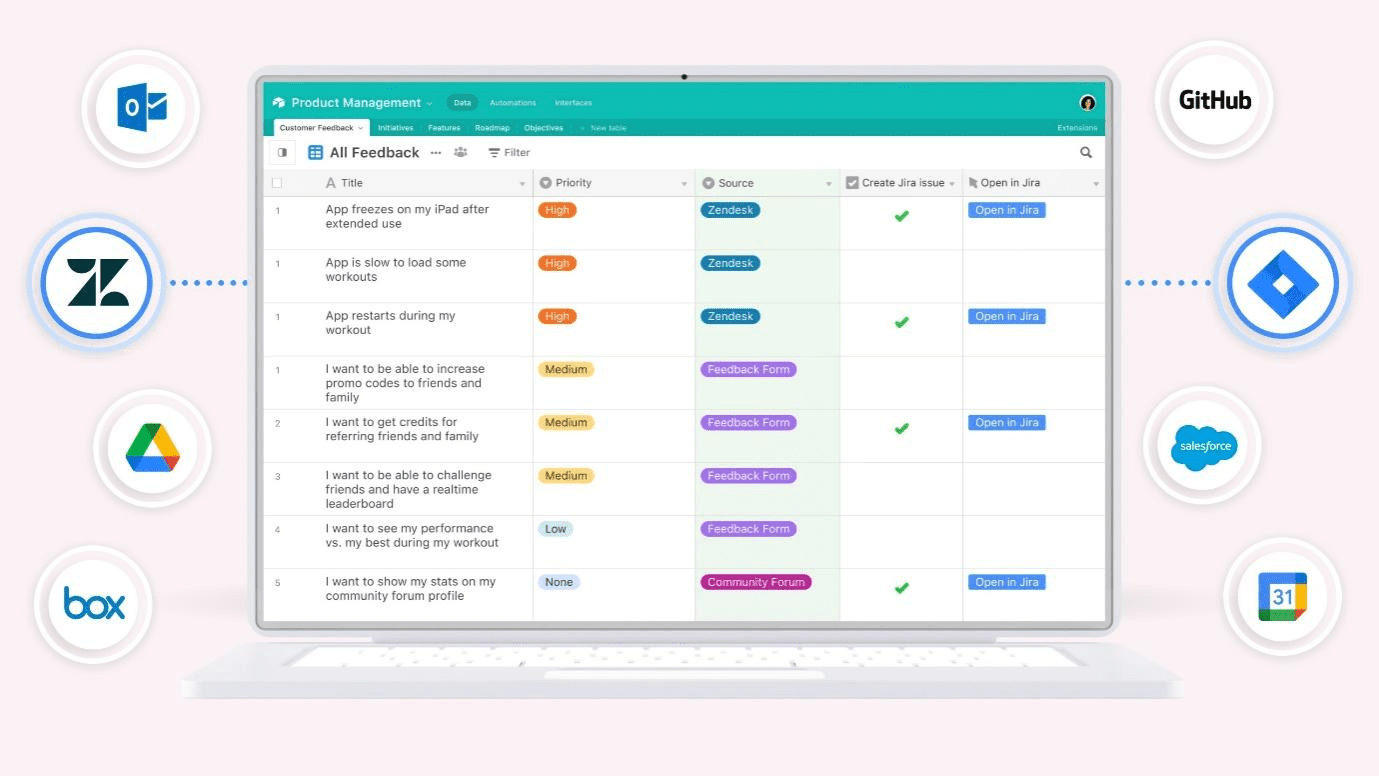
Airtable Interface
Good article from the site: What is Product Management? A Complete Guide
Roadmunk
Founded in 2012 by Latif Nanji and Tomas Benda, Roadmunk is a cloud-based product management and roadmap software that enables product managers to create, manage, and share product roadmaps effortlessly. Its user-friendly interface includes drag-and-drop roadmap creation, visual timeline views, analytics and reporting, collaboration and sharing tools, and integration with popular project management and communication tools like Jira, Trello, and Slack. With its customizable features and ability to provide a clear product roadmap overview, Roadmunk is a great choice for product managers seeking an efficient and effective tool.
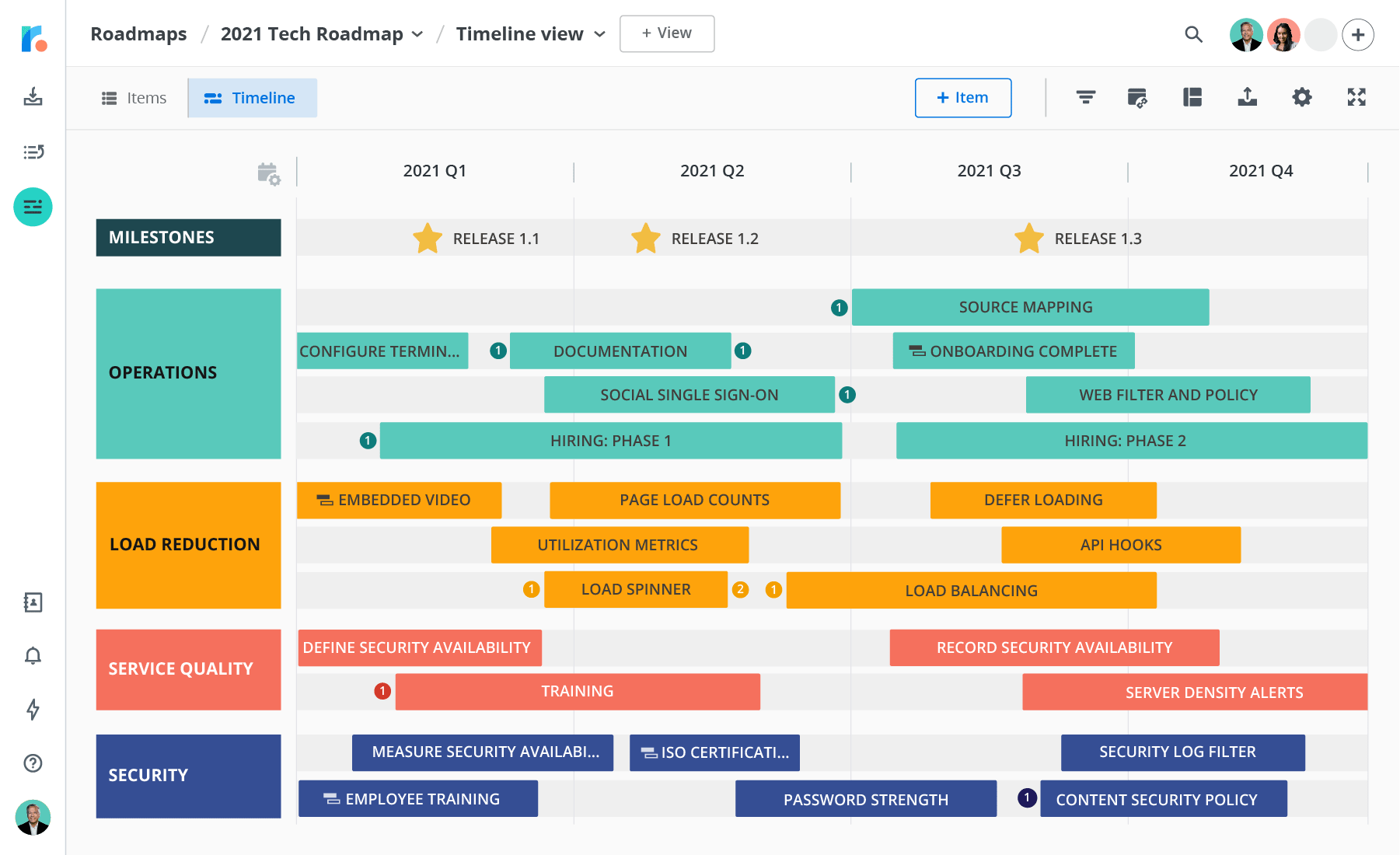
Roadmunk Interface
Good article from the site: The Product Development Process: 6 Stages
InVision
Looking to create interactive prototypes without any coding experience? InVision is your helping hand! This cloud-based platform was founded in 2011 by Clark Valberg and offers a variety of useful features, including design collaboration, version tracking, commenting, and user testing. In addition, InVision stands out from other design tools due to its unique ability to improve communication between designers, developers, and stakeholders throughout the design process. Overall, InVision is an excellent choice for teams prioritizing collaboration and wanting to streamline their design workflows.
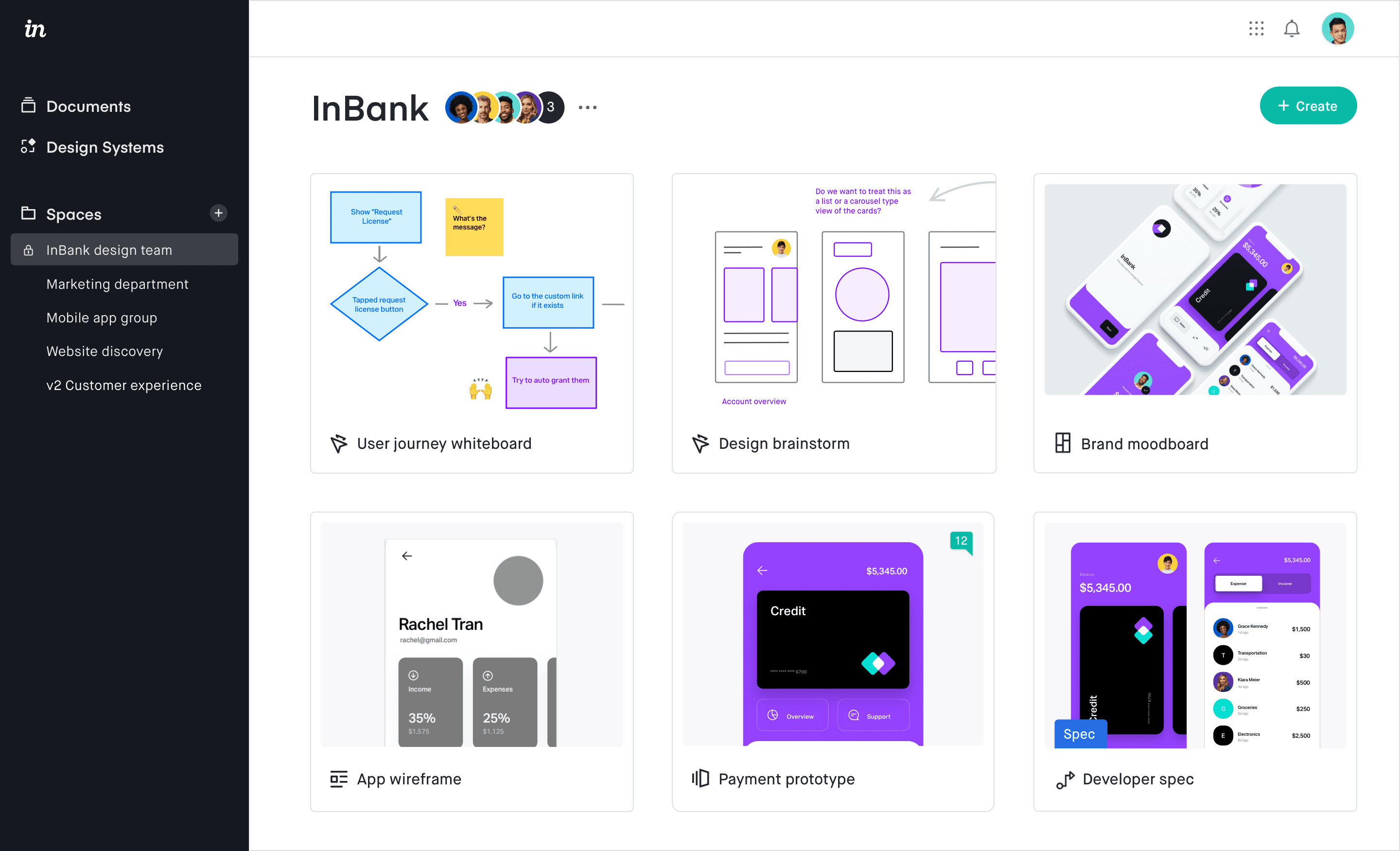
InVision Interface
Good article from the site: Inside Design Blog | Thoughts on users, experience
Final Thought
To conclude, identifying and selecting the right Product Management tool is crucial for every product team, and countless options are available depending on your priorities and desired outputs. Whether collaboration, customization, or user testing, you can find a tool that suits your team’s needs. You can access unique features and benefits with tools like Jira, Pendo, Figma, and Roadmunk. Therefore, take the time to evaluate your options and try out different tools before sticking with the hand-picked tool. If you found this article useful, feel free to share it with your colleagues and leave a comment below, sharing your experiences and thoughts. We would be happy to hear from you!
